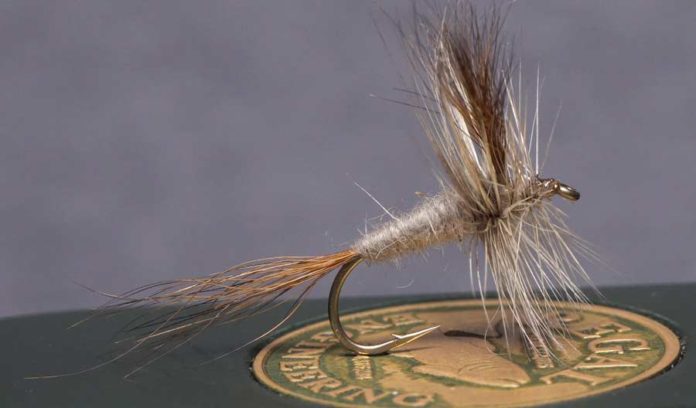In 1930, frustrated by English-style dry-flies that wouldn’t stay afloat on the tumbling rivers of the Catskills, Lee Wulff created a series of three distinctly American patterns. They were originally named the Ausable Gray, Coffin May, and Bucktail Coachman, and they were designed with input from Dan Bailey, who was then a school teacher in Brooklyn. (He moved to Montana and launched his iconic Livingston shop in 1938.) Bailey encouraged Wulff to rename the patterns, which became the Grey Wulff, White Wulff, and Royal Wulff. Ninety years later, all three patterns remain popular and effective, a testament to Wulff’s vision.
In this week’s video from Tim Flagler of Tightline Productions, he shows you exactly how to tie the Gray Wulff. (It’s interesting that Wulff chose the English spelling of “Grey” while creating a supposedly American pattern.) As usual, Tim offers several great tips for keeping all the materials under control on the hook, and I particularly like the way he uses a base of dubbing to help manage the slippery deer hair and hackle. Every angler should have a few of these in their box, and they make a killer indicator fly in a tandem ring, as well.
Gray Wulff
Hook: Standard dry-fly hook hook (here a Lightning Strike DF1), sizes 8-16.
Thread: Tan, 8/0 or 70-denier.
Underbody (optional): Adams gray beaver-fur dubbing.
Wings: Brown bucktail, cleaned and stacked.
Tails: Brown bucktail, cleaned and stacked.
Body: Adams gray beaver-fur dubbing.
Hackle: Medium dun or barred-dun badger hackle.
Thorax: Adams gray beaver-fur dubbing.
Head: Tan tying thread.
Adhesive: Head cement (here, Sally Hansen Hard-As-Nails).
Collar: Pearl Mylar cord, large.
Credit: Source link































